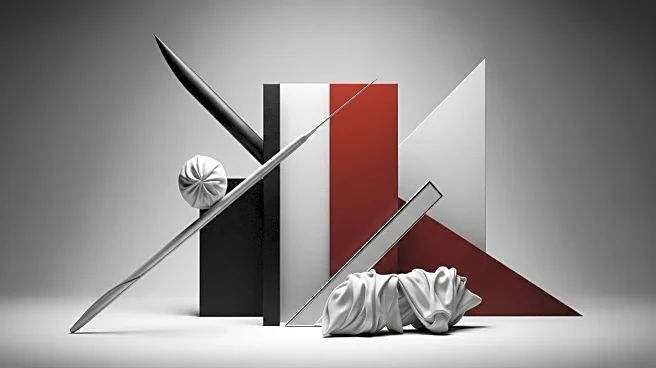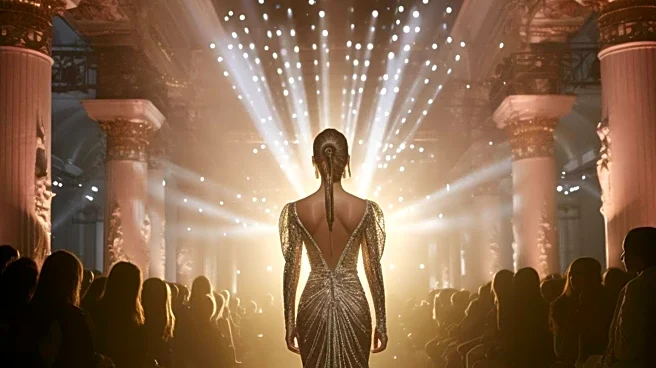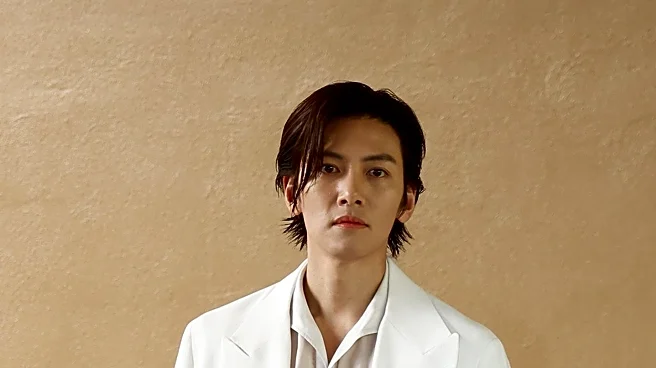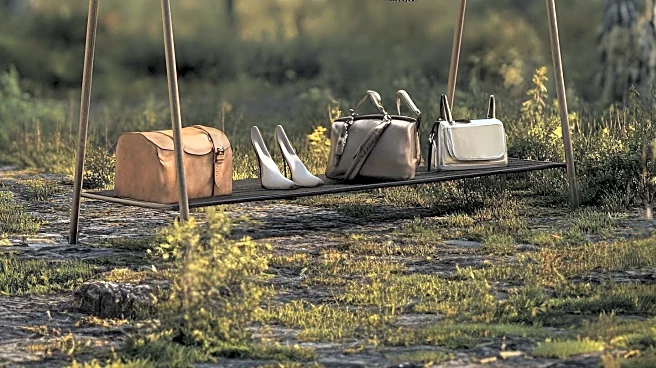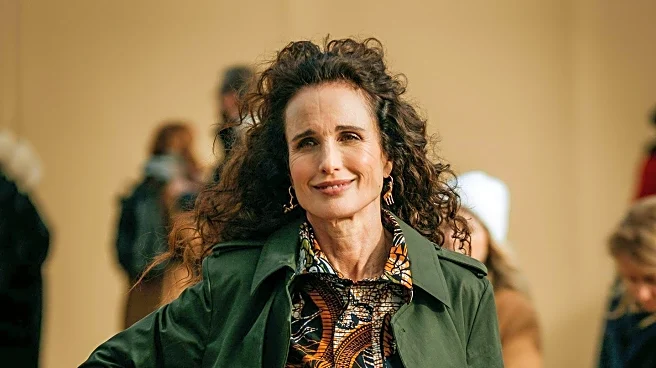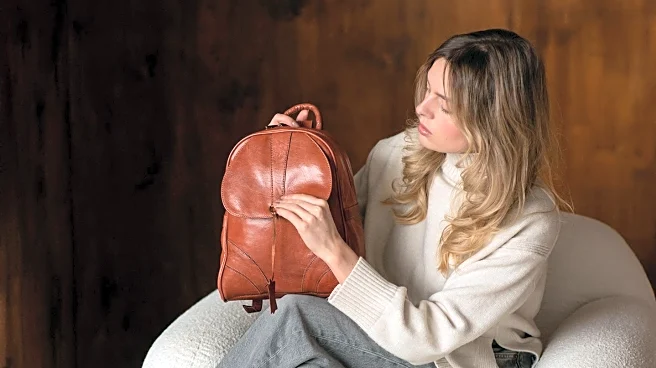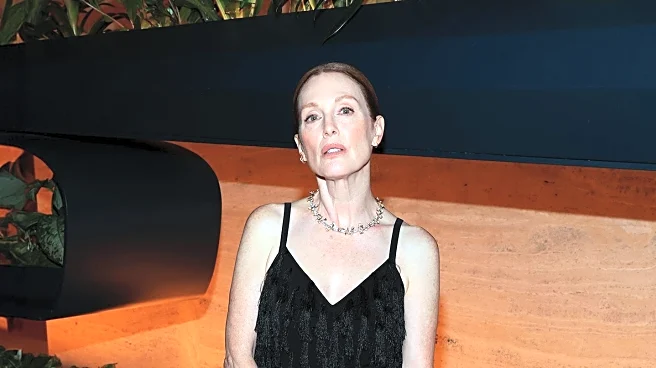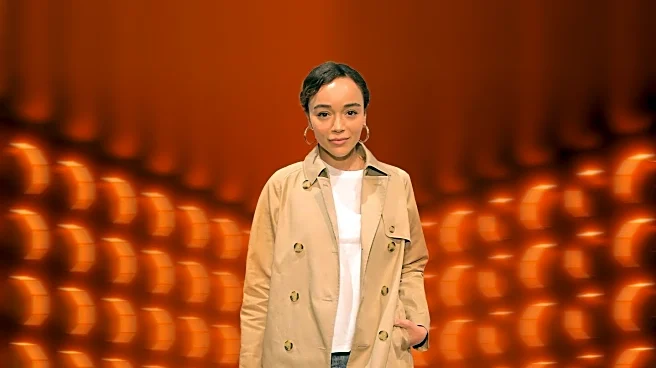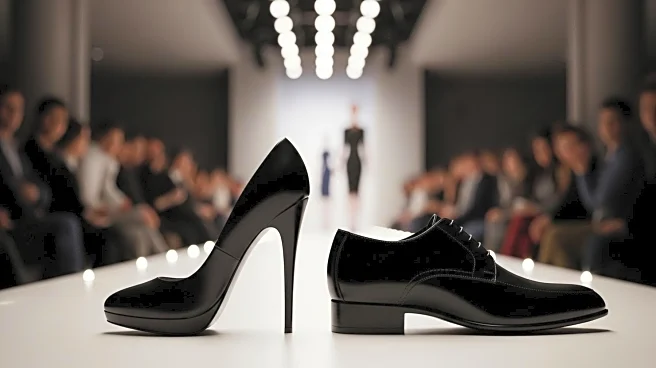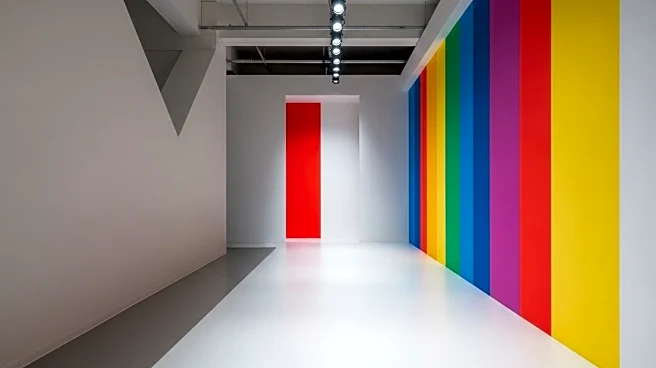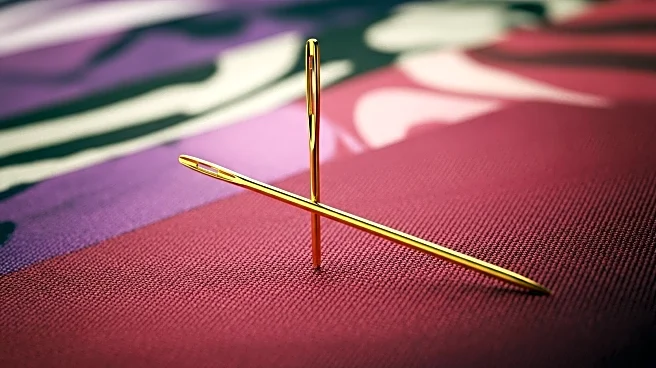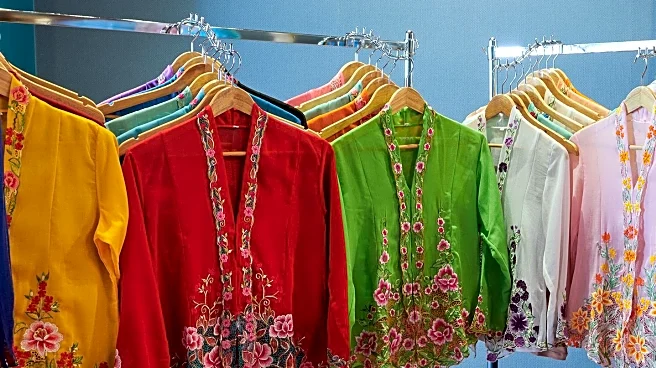What is the story about?
What's Happening?
Milan Fashion Week featured notable presentations from Bottega Veneta and Ferragamo, highlighting innovative design approaches. Bottega Veneta's debut by Louise Trotter showcased layers and precision, maintaining the brand's signature style while evolving towards more wearable fashion. Trotter's designs emphasized body movement and sentimentality, incorporating Venetian opulence and Milanese austerity. Ferragamo's Maximilian Davis focused on 1920s-inspired designs, exploring elegant linearity with fringed flapper silhouettes. The collection included tuxedos, trenches, and lingerie dresses, though it lacked narrative coherence. Ferrari and Dolce & Gabbana also presented collections, with Ferrari emphasizing texture and shape, and Dolce & Gabbana exploring softer, cosier styles.
Why It's Important?
The presentations at Milan Fashion Week reflect the ongoing evolution of luxury fashion, with designers balancing tradition and innovation. Bottega Veneta's focus on wearability and sentimentality may appeal to consumers seeking practical yet stylish options. Ferragamo's exploration of historical aesthetics highlights the brand's commitment to its heritage, potentially attracting consumers interested in timeless elegance. The emphasis on texture and shape by Ferrari and the shift towards softer styles by Dolce & Gabbana indicate a broader trend towards more versatile and comfortable fashion. These developments could influence consumer preferences and drive demand for innovative designs.
What's Next?
As Milan Fashion Week concludes, designers will likely continue to refine their collections, incorporating feedback and trends observed during the event. The focus on wearability and versatility may lead to increased collaboration between fashion houses and designers to create collections that resonate with consumers. The industry may also see a shift towards more sustainable practices, as designers explore new materials and techniques to reduce environmental impact. The success of these collections could influence future fashion trends and drive innovation in the luxury sector.
Beyond the Headlines
The emphasis on wearability and versatility in luxury fashion reflects a broader cultural shift towards practicality and sustainability. As consumers become more conscious of their purchasing decisions, fashion houses may need to adapt by prioritizing ethical production and sustainable materials. This shift could lead to long-term changes in the industry, with designers exploring new ways to balance creativity and responsibility.
AI Generated Content
Do you find this article useful?
